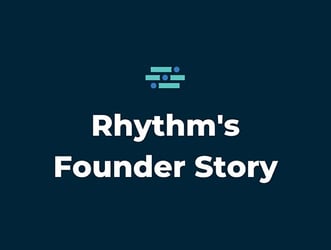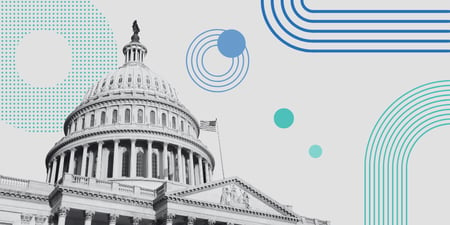If you’re thinking about launching a sponsorship program for the first time, you’re not alone — and you’re not behind. Associations of all sizes and maturity levels are exploring sponsorships as a strategic way to diversify revenue, expand partnerships, and deliver greater value to members. But starting from scratch can feel overwhelming.
What do you offer? How do you price it? Will anyone even be interested?
This guide is here to walk you through it, step by step. Whether you're an executive director focused on sustainability, a membership lead looking to enrich your programs, or a business development pro trying to build relationships that scale — this will help you launch a sponsorship program with clarity, purpose, and long-term potential.
Start With the “Why”
Before you build a spreadsheet of packages or brainstorm logo placements, pause to ask a foundational question: Why do we want a sponsorship program in the first place? When you're starting from scratch, having a clear purpose helps you stay focused and helps potential sponsors understand the value of getting involved.
Sponsorships can serve different goals depending on your association’s priorities. Some of the most common include:
- Generating non-dues revenue to fund new or under-resourced programs
- Offsetting event costs so you can keep registration fees reasonable
- Creating long-term partnerships with companies that serve your members
- Elevating your public presence by associating with credible industry partners
- Enhancing member value by offering access to useful tools, services, or content
Once your team agrees on the primary purpose, that “why” should guide everything — from the types of sponsorships you offer to how you measure success.
Know Your Audience and Make It Part of the Pitch
Your members are your most valuable asset and the main reason sponsors want to work with you. But “we have 2,000 members” isn’t enough to close a deal. Sponsors want to understand who those members are, how engaged they are, and whether they align with their target market.
That’s why your first step is to define your audience in concrete, compelling terms. Start gathering or compiling data on:
- Demographics: Industry, job titles, seniority, geography
- Engagement behavior: Email open rates, event attendance, online learning participation
- Influence: Are they decision-makers? Do they control or influence purchasing?
- Challenges and goals: What problems are your members trying to solve in their daily work?
Gather quantitative data from platforms like your AMS, email marketing tool, LMS, and online community while considering qualitative data collected from member surveys or conversations with your programs team. A strong audience profile not only helps you build better sponsorships, it gives you a major advantage when making the case to potential sponsors.
Inventory What You Already Have
One of the biggest misconceptions about sponsorships is that you need a massive conference or glossy publication to attract interest. In reality, most associations already have valuable sponsorship real estate, they just haven’t mapped it yet.
Start by making a list of every place your association interacts with members or offers visibility:
- Events: Annual conferences, regional meetings, virtual workshops, webinars
- Email and digital media: Newsletters, dedicated blasts, blogs, online communities
- Programs: Awards, leadership series, member spotlights, certification tracks
- Print and on-demand materials: Magazines, directories, downloadable reports
- In-person opportunities: Branded signage, lanyards, coffee breaks, receptions
Look at each asset and ask: Could this offer exposure or engagement for a sponsor in a way that’s authentic to our mission and helpful to our members? That’s the sweet spot you’re aiming for. You don’t have to create new programs, you just have to unlock new ways to fund and enhance the ones you already have.
Build Packages That Make Sense
Once you’ve taken inventory of what you can offer, the next step is organizing those assets into clear, compelling packages. Well-structured sponsorship opportunities help prospective partners quickly understand their options and the value they’ll receive. Just as importantly, they make it easier for your team to fulfill what’s promised.
You don’t need to reinvent the wheel here, but do build with intention. Whether you use traditional tier labels or theme-based naming, your packages should be designed to scale in visibility and engagement while remaining flexible for customization.
Key components to include in each package:
- Defined benefits: Spell out what the sponsor gets — logo placement, speaking opportunities, branded content, etc.
- Timing and exposure: Indicate when and where their sponsorship will appear (event signage, emails, website banners, etc.).
- Audience reach: Share approximate numbers, like how many attendees, readers, or viewers each asset reaches.
- Differentiated tiers: Make sure higher levels offer more than just more logos — think access, exclusivity, or thought leadership.
- Customization options: Leave space for conversation — your first sponsors may want to swap assets or combine tiers.
Well-designed packages help sponsors see themselves in the partnership, not just as a line item, but as a strategic participant in your association’s success.
Price Based on Value, Not Just Cost
One of the trickiest parts of launching a sponsorship program is setting the right price. The biggest mistake? Pricing based on what it costs you to execute. Instead, you need to price based on what the exposure is worth to your sponsor.
You can anchor your pricing by considering:
- Peer comparisons: Look at what similar associations are charging for equivalent visibility or access.
- Impressions and engagement: Estimate how many people will see or interact with each sponsorship element.
- Exclusivity premiums: Increase the price for limited or one-of-a-kind placements like title sponsorships or keynote intros.
- Perceived value: Consider how your audience’s influence, niche, or loyalty makes access more valuable than just raw numbers.
If you’re unsure, start with draft pricing and test it in early conversations. Sponsors will often give you subtle (or direct) clues about where the value lands for them.
Create a Clean, Clear Prospectus
Your sponsorship prospectus is your marketing tool. It’s what tells the story and sells the program. It doesn’t need to be overly complex, but it should look professional, be easy to skim, and clearly outline what’s available.
Include:
- Your identity and mission: A brief overview of who you are and why your work matters.
- Audience stats: Key numbers like member count, event attendance, email open rates, or social engagement.
- Tiered opportunities: A side-by-side breakdown of sponsorship levels and what each one includes.
- Next steps: A clear, direct call-to-action for interested sponsors (with contact info or a scheduling link).
Use simple design tools like Canva, Google Slides, or even PowerPoint to make it visually appealing. Remember: you’re not just selling space, you’re selling a relationship.
Reach Out to the Right Sponsors
With your packages and materials ready, it’s time to connect with potential sponsors. Start with people who already know and trust your organization like past exhibitors, advertisers, or partners who serve your industry.
When you reach out:
- Personalization matters: Reference a previous interaction, a product fit, or something specific about their audience alignment.
- Lead with value: Don’t just describe the opportunity. Explain what the sponsor will gain by participating.
- Invite conversation: Ask for a quick call or exploratory chat, not a commitment right away.
- Track your outreach: Use your AMS to log activity and follow-ups.
Sponsorships are often about timing, so consistent, respectful outreach wins in the long run.
Deliver What You Promised (And Prove It)
This is where trust is built…or broken. Once a sponsor says yes, it’s up to your team to make sure the experience is smooth, professional, and worth their investment.
Set yourself up for success by:
- Internal checklists: Assign clear tasks for design, copy, deadlines, and logistics so nothing slips through.
- Sponsor coordination: Let sponsors know what to expect, when assets are due, and when deliverables will go live.
- Performance recaps: After fulfillment, send a short summary — metrics, screenshots, links — to demonstrate impact.
- Ongoing communication: Don’t go silent after the check clears. Regular updates build confidence and often lead to upsells or renewals.
Execution is where good ideas turn into lasting relationships, so build fulfillment into your program, not as an afterthought.
Build Toward Renewals, Not One-Offs
Getting a first-time sponsor is a win, but getting them to renew is the real goal. Don’t treat sponsorships like single transactions. Treat them like the beginning of a multi-year conversation.
Here’s how to keep the momentum going:
- Feedback loops: Ask what worked, what didn’t, and what they’d like to try next time.
- Early access perks: Offer advance pick of next year’s opportunities or hold pricing for repeat sponsors.
- Integrated partnerships: Invite sponsors to contribute content, host sessions, or support new initiatives.
- Recognition touchpoints: Thank them publicly — in your newsletter, at your event, or on LinkedIn — and celebrate their involvement.
Every touchpoint after fulfillment is a chance to reinforce the value of the partnership while teeing up the next one.
Refine As You Go
Your first sponsorship program doesn’t need to be perfect, it just needs to be intentional, learnable, and repeatable. Make space to step back after your first cycle and reflect honestly on what worked.
A good review includes:
- Top-performing packages: Which ones sold quickly or got strong sponsor engagement?
- Delivery pain points: What was harder to fulfill than expected? Where did you scramble?
- Member experience: How did members react to the sponsor visibility — did it feel helpful or intrusive?
- Sponsor satisfaction: What feedback came through explicitly or between the lines?
Use this insight to revise your packages, pricing, and messaging. A year from now, your program will be sharper, easier to manage, and better aligned with your goals because you built it to evolve.
Final Thoughts: Start Small, Think Big
You don’t need a dozen sponsors or a 40-page prospectus to launch a successful program. Start with what you have, be transparent, and focus on delivering value — to both your members and your partners.
Sponsorships aren’t just about funding programs. They’re about building bridges with organizations that share your mission, care about your community, and want to grow with you.

Kelli is the VP of Revenue at Rhythm. When she’s not diving into what makes associations tick, you can find Kelli planning her next trip or playing with her two rescue pups.






